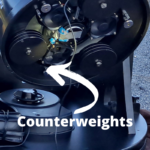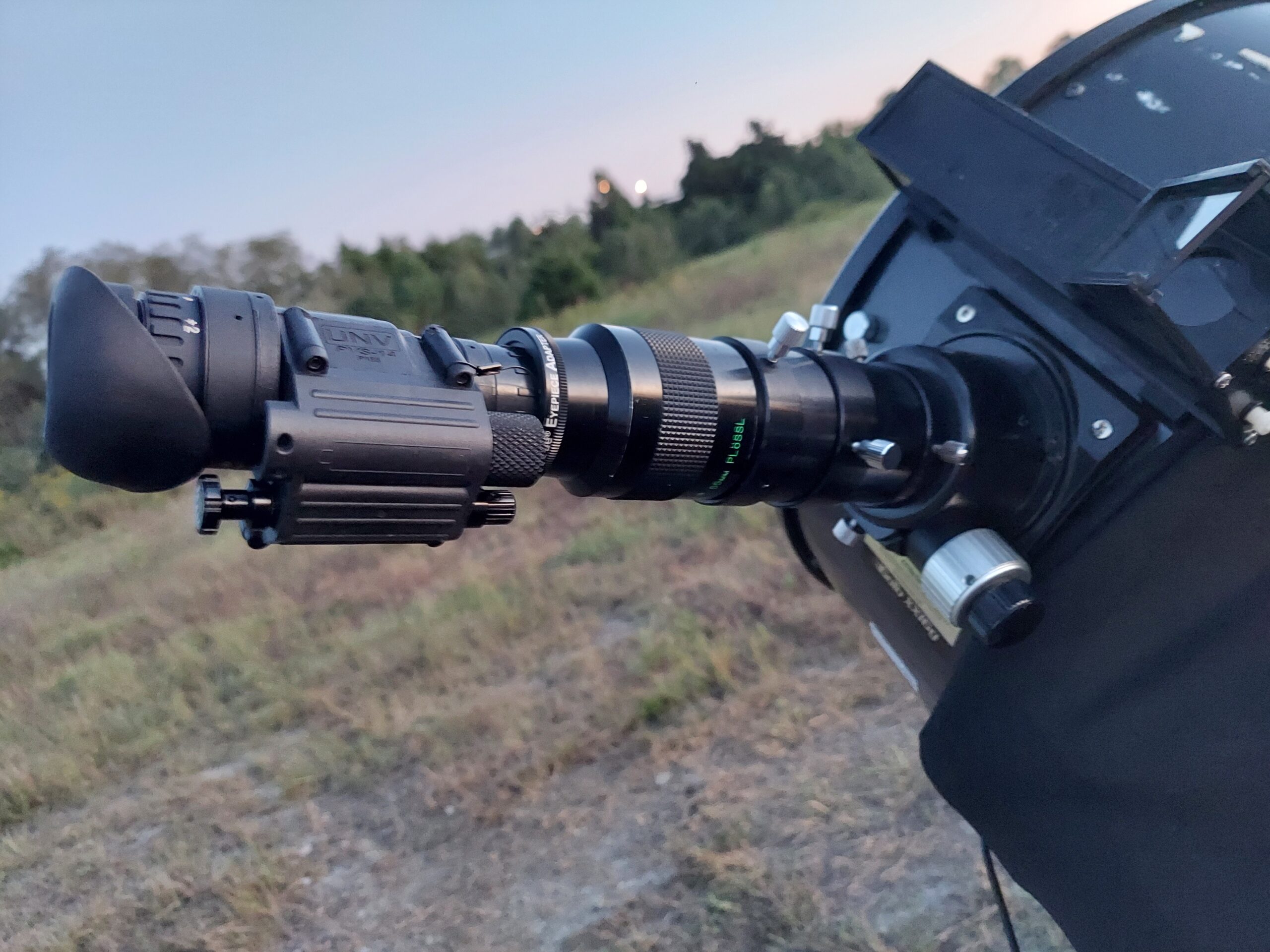If you are shopping for your first telescope, you might notice that some models include a device called a diagonal.
In this article I’ll explain what a diagonal does, describe the different types of diagonals, and discuss whether you should consider upgrading the unit supplied with your purchase.
A star diagonal is a device which inserts into the focuser of refractor and catadioptric telescopes. Their purpose is to direct the light from the telescope to the eyepiece at a more comfortable viewing angle, usually 45 or 90 degrees relative to the optical path.
Without a diagonal, looking through a refractor at the night sky would involve crouching beneath the optical tube and craning your neck to peer through it; not an inviting prospect!
There are two main types of diagonals that you’ll find on the market: mirrors and prisms.
Each type contains numerous sub-categories and design variations, but they generally come in two different sizes: 1.25” or 2”.
This is because the diagonal’s barrel diameter must fit the focuser drawtube diameter of the telescope it will be used on.
Note that Newtonian reflectors don’t require diagonals, as they instead use a 45-degree secondary mirror inside the telescope to direct the light into the focuser at a comfortable 90-degree angle.

Prism Diagonals
As the name suggests, prism diagonals use a glass prism to direct the light at an angle for more comfortable viewing, though from the outside they can be hard to distinguish from mirror diagonals.
They come in two main types:
Erecting Prism
This type of diagonal provides an image which is correctly oriented top to bottom and left to right.
Though 90-degree erecting prisms exist, 45-degree versions are more common and are often supplied with entry-level refractors.
The main purpose of 45-degree erecting prisms is terrestrial daytime viewing (e.g., birding, nature viewing, etc.). 45 degrees is the most comfortable viewing angle with the telescope oriented horizontally, and the correctly-oriented image allows for a more natural viewing experience.
For these reasons you will most often see 45-degree diagonals on spotting scopes.
If your astronomical telescope came with a 45-degree erecting prism I would recommend supplementing it with a 90-degree star diagonal as soon as you can.
This is because erecting prisms have several disadvantages for nighttime viewing.
The most obvious is that the 45-degree angle will become awkward and uncomfortable when the telescope is pointed at a high altitude.
Erecting prisms can also introduce aberrations such as false colour and diffraction spikes on bright stars and planets.
Finally, the more complicated light path of the erecting prism results in a loss of contrast. High-quality, 90-degree erecting prisms do exist, but they are very expensive due to the complexity of the manufacturing process.
90-degree Prism Diagonal
Not to be confused with 90-degree erecting prisms, the 90-degree prism diagonal is less common to see on the market these days.
Unlike erecting prisms, these prisms do not flip the image for a correctly-oriented view. Instead, they provide a mirror-reversed image in the same way as a mirror diagonal.
This simpler design does not result in light loss as with an erecting prism. They also offer certain advantages over comparable mirror diagonals: they do not lose any contrast to “scatter”, where light is imperfectly reflected off a mirror surface, and they don’t have coatings which will degrade over time due to oxidation.
The disadvantage of prism diagonals is that they can introduce chromatic aberration (false colour) at short focal lengths. Therefore, they will work better in long refractors or SCT-type telescopes.
Mirror Diagonals
These devices use a 45-degree mirror to reflect the telescope’s image at a 90-degree angle for nighttime viewing.
Due to their simplicity, they are cheaper to produce than the equivalent prism diagonal, and they will not exhibit false colour with any telescope.
On the minus side, mirrors do not reflect light perfectly; some of it will be absorbed and scattered by the mirror substrate material and coatings. Higher-end mirror diagonals use more advanced (and expensive) coatings to get around this issue. Here are a few types of mirror diagonals:
Standard Aluminized: These basic diagonals will serve most users well enough at a minimum cost, reflecting around 90% of the incident light to the eyepiece. Their coatings offer some protection for the mirror but do little to enhance reflectivity and will also degrade over the years.
Enhanced Aluminum: Optical coatings are applied to the standard aluminized mirror to improve reflectivity to 95% or more.


Dielectric
Currently the gold standard for mirror diagonals, these mirrors have special multi-layer coatings capable of reflecting 99% or more of the incoming light from space.
Dielectric mirrors are also far more durable than aluminized mirrors and will not degrade over time. They typically cost 2-4x more than standard star diagonals.
Getting the Right Fit
It is important to ensure your diagonal is compatible with your telescope and the eyepieces you will be using.
Refractor diagonals have a nosepiece which inserts directly into 1.25” or 2” focusers. The 2” models usually come with 1.25” eyepiece adapters but you should make sure of this if you plan on using 1.25” eyepieces.
SCT diagonals, on the other hand, have threading to attach them directly to the visual back of SCT telescopes.
Some diagonals are built specifically for certain telescope models.
In addition to size and type, there are also fittings to consider.
Cheap diagonals use basic, off-the-shelf parts in their construction. Premium models are noticeably superior not just in the optics, but also the materials of the body, the machining of the barrels and threading, and the quality of the set screws. Even the dust caps will have a nicer fit.
They may also have proprietary features such as specialized optical coatings and eyepiece-clamping mechanisms.
Whether or not these upgrades are worth something to you is a matter of preference.
The Takeaway
Ultimately, there is no right answer when it comes to selecting a diagonal for your telescope.
We can say that short-focus refractors, below f/7 or so, should use a mirror diagonal to avoid excess false colour.
For a longer refractor or catadioptric scope like an SCT, a 90-degree prism might work as well or better than a mirror and last longer, unless you can afford a high-end dielectric mirror.
Focal length is another topic entirely and you can read this deep dive on focal length for more information.
Erecting prisms are generally not useful for astronomy though some will beg to differ on this point.
As for whether it is worth spending money on an upgrade, the general rule is that your diagonal should be upgraded when you feel it has become the weakest link in your setup.





